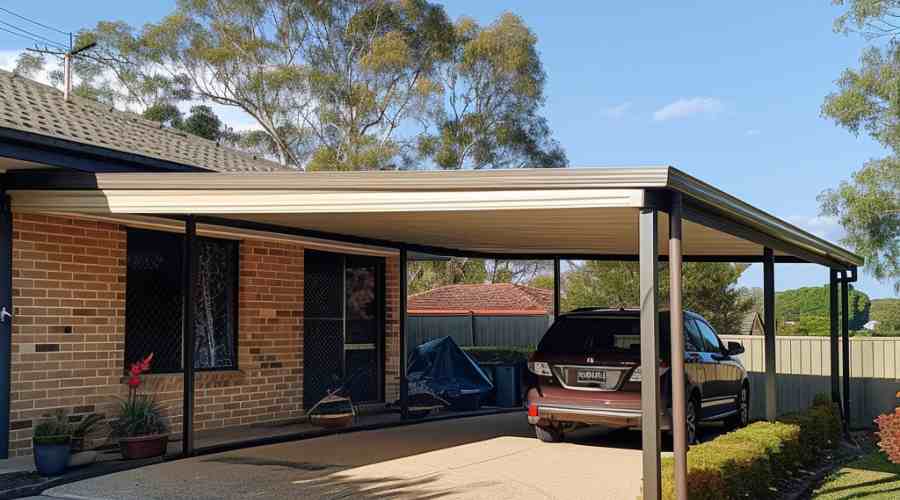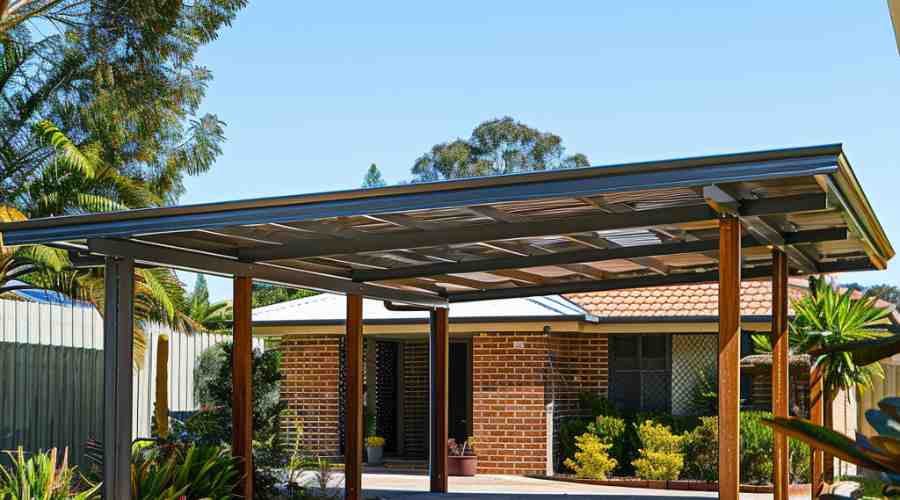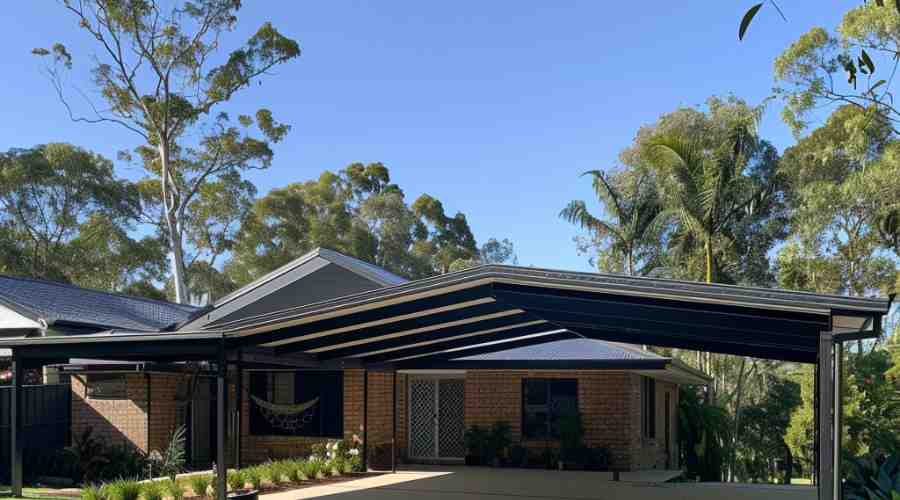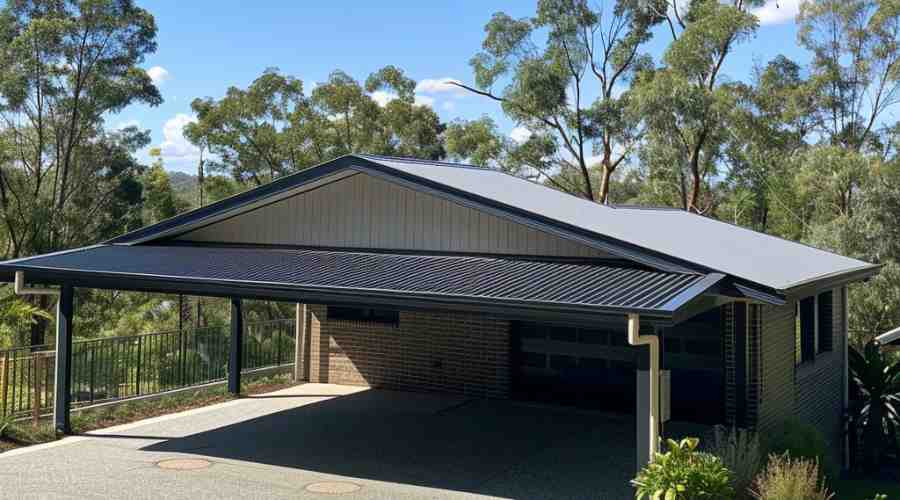The Carport Building Materials
Common Carport Materials Pros and Cons
Building or replacing a carport? With so many options to choose from, selecting the right materials can be overwhelming. This guide breaks down the most popular carport building materials in Australia, including the pros and cons of each to help you decide. We’ll also explore the factors to consider when choosing materials for durability, style, and budget.
Benefits Of Choosing The Right Carport Materials
Picking the right carport building materials for your needs comes with many advantages:
Durability
Materials like metal, concrete and timber stand up well to weather, wear and tear over many years. This saves you money on replacements.
Appearance
Complement your home’s look with attractive, stylish materials that add curb appeal.
Cost savings
Spend a bit more upfront for robust materials that last vs cheaper options that need frequent replacing.
Energy efficiency
Some materials, like metal and insulated roofing, reduce solar heat gain leading to cooler interiors.
Low maintenance
Materials that hold up well, resist moisture, etc, cut down on upkeep time and costs.
Added value
Quality carport materials that suit your home can increase resale value.
Choosing the right carport elements for your climate, design tastes and budget takes some research. This guide makes it easier. Keep reading!
Popular Carport Materials To Choose From
Metal
Aluminum
This is a lightweight, silver-colored metal option for carports. The benefits are that aluminum does not rust and stands up well against the elements without a lot of upkeep needed. It also takes paint nicely if you want to add color. On the downside, aluminum can dent more easily compared to steel when hit by things like hail, fallen tree limbs, ladders, etc. Overall it is a good metal pick if you like the modern, metallic look.
Colorbond Steel
Steel is popular for carports because it is strong and affordable. Cold-rolled steel holds up better than aluminum to impacts from storms, falling branches, accidents, etc. without showing dents and damage as much. The one drawback is that untreated steel tends to rust from moisture exposure. But special treatments like galvanisation, powder-coating and painting help prevent rust damage over time. Prepped correctly, steel stands up well to the elements.
Iron
Iron carports or components give a very durable, decorative accent. Wrought iron detailed posts and brackets make a lovely addition. Cast iron fixtures add vintage charm. The downside is that iron can be complicated to put together, making it one of the more expensive metal choices. However the thick, solid posts, curves and detailing you get in return make the cost worthwhile for many homeowners. And since iron already contains properties that resist rust, less protective treatment is needed compared to steel.
Pros
- Very durable
- Low maintenance
- Wind/weather resistant
- Good value
- Easy to clean
Cons
- Can be noisy in rain or hail
- Prone to rust (steel only)
- Can dent (Aluminum)
- Heat conduction
Wood
Wood is valued in carport buildings because it provides natural beauty while being an affordable and easy material to work with. Popular uses for wood include:
- Support Posts – Large timber posts anchor the carport structure to the ground. Pressure-treated hardwoods like cypress or cedar hold up best outside over many years. They should sit atop a concrete base.
- Rafters – These are long spanning beams that make up the sloped carport roof frame. Oak, pine and spruce material give strength here.
- Decking – If including covered shelter space ties into an existing deck or patio, pressure-treated pine withstand weather exposure well. Redwood and high-quality woods offer style.
- Fascia – Vertical trim and facing boards that cover outer roof edges adding a nice finished look. Western red cedar or durable PVC suits this decorative role.
Pros
- Affordable
- Easy to work with
- Attractive natural beauty
- Variety of timber types
Cons
- Prone to rot, cracking
- Can warp or split
- Termite risk
- Ongoing sealing needed
Concrete
Poured Concrete
This means liquid concrete that is mixed onsite and then poured into forms to harden. Poured concrete is super strong and lasts for decades. It can take very heavy car, truck or RV traffic without cracking. Custom designs work well with poured concrete. The negatives are that it is one of the more expensive choices requiring professional installers. It also looks quite cold and dreary unless you add decorative touches after.
Pre-Cast Concrete
This is concrete that has already been factory molded into slabs, posts, borders and other shapes before delivery. The pre-formed pieces get craned into place then joined together. This speeds up installation time. Decorative options like exposed aggregate, embedded tile, or stamped patterns help overcome concrete’s hard appearance. On the plus side, pre-cast concrete structures stand up well over time with very little maintenance required.
Pros
- Very durable
- Fire resistant
- Customisable design
- Handles heavy vehicles
- Low maintenance
Cons
- Expensive
- Cold, hard appearance
- Crack/chip over time
- Dusting surface
Plastic/Resin Panels
These are made from HDPE, a smooth, molded thick plastic. The panels interlock to form walls and roofs on metal frame kits.
Resin panels are lightweight compared to wood, metal or concrete. This makes DIY installation easier. The panels snap together quickly too.
They cost less than other choices while handling weather decently. Colour and style options help plastic blend with homes better.
Downsides are that plastic resin won’t last as many years as wood, metal or concrete. Over decades in sunlight the panels tend to sag, warp and discolor slowly losing their nice look.
For a quick affordable carport that you expect to use shorter-term, easy-to-work with plastic resin panels do the job. They just lack the durability and longevity of pricier alternatives.
Pros
- Affordable
- Lightweight
- Easy installation
- Color/style options
- Low maintenance
Cons
- Less durability
- Can discolor over time
- Less insulating
- Prone to sagging
Other Material Options
- PVC – Durable, affordable plastic that comes in panel and lattice styles
- Glass – Provides beauty, light and style. More costly and fragile.
- Brick/Stone – Matches homes beautifully but very heavy and expensive
- Tile – Extremely durable but heavy and high installation skills needed
Carport Material Comparison
| Material | Durability | Cost | Appearance | Maintenance |
|---|---|---|---|---|
| Metal | High | Mid-range | Modern aesthetic | Low |
| Wood | Mid-range | Low | Natural, warm beauty | High |
| Concrete | Very high | High | Cold, hard look | Very low |
| Plastic | Low | Low | Color/style options | Low |
| Brick/Stone | High | Very high | Matches homes beautifully | Mid |
| Tile | Very high | High | Stylish | Low |
What To Consider When Selecting Materials
Choosing the right carport materials involves weighing up:
Local Weather
Consider rain, wind, heat, snow load and other climate exposures. For example, in high humidity zinc coating helps steel resist rust. Select durable materials designed for tough conditions.
Functional Needs
Will your carport double as storage or hobby space? Accommodate vehicles only or also boats? Materials that take heavy use, dampness, etc are key. Concrete holds up to heavy duty demands.
Aesthetic Appeal
Your carport’s design and materials should complement your home for beautiful curb appeal. Feature stone, wood and metal match traditional designs while sleek aluminium suits modern homes.
Budget
Less expensive wood and plastic carport materials fit smaller budgets but higher quality options like colourbond steel cost more while lasting much longer. Focus spending on structural elements.
Eco-Friendliness
Green design with sustainable timber, recyclable aluminium and steel, solar panels etc is ideal. Also consider insulation to save heating/cooling energy.
Installation Time & Difficulty
Quick, simple DIY builds suit wood-framed carport kits you assemble yourself. More complex concrete and custom metal builds require technical skills.
Ongoing Care Effort
Low maintenance materials like colourbond steel, aluminium and concrete spare you time-consuming upkeep like weatherproofing wood constantly. Spend now or spend often later.
By weighing up these key factors – climate, functional needs, appearance, budget and more – you can zero in on smart, tailored carport materials for your location and lifestyle.
Conclusion
With numerous materials like timber, steel, aluminium, concrete and even plastic to select from, choosing the right ones for your carport build or renovation is key. Consider durability for long-lasting performance along with appearance, insulation, cost and maintenance requirements before deciding. Blend materials to enjoy wood’s natural beauty with metal’s strength or concrete’s resilience paired with warm timber accents. With some thoughtful planning using this carport building materials guide, you can craft outdoor covered parking that protects vehicles in style while complementing your home beautifully for years to come.




